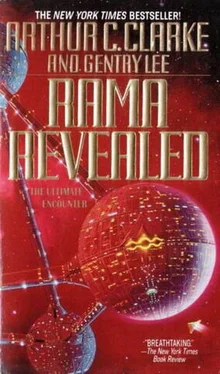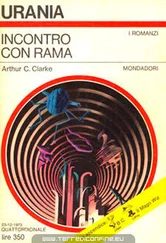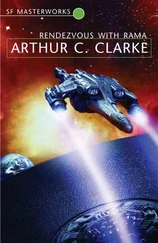Arthur C. Clarke and Gentry Lee
Rama Revealed
We would like to thank Neal and Shelagh Ausman, as well as Gerry and Michelle Snyder, for representing the readers in making suggestions about topics that should be addressed in Rama Revealed. Gerry was also extremely helpful in discussions about the details of the octospider language.
Our Bantam editor Jennifer Hershey has been a source of strength and support throughout the development and writing of this novel, providing both unflagging encouragement and valuable recommendations about all aspects of the book. Thank you, Jennifer. We are also indebted to Richard Evans at Gollancz for several specific editorial remarks, including the suggestion of adding a prologue.
Lou Aronica and Russ Galen, our publisher and our agent, have helped us in countless ways during the five years since the Rama trilogy sequel was originally conceived. Their many contributions have allowed us to focus our energies on the actual writing of the novels.
Our final thanks go to our families, for their love and understanding throughout this time period. To Stacey Kiddoo Lee especially, we extend our heartfelt appreciation, not only for her willingness to manage a family of five small boys in the presence of difficult (and changing) constraints, but also for her insightful comments about Nicole and the other leading female characters of the trilogy.
In one of the outlying spiral arms of the Milky Way Galaxy, an inconspicuous, solitary yellow star slowly orbits the galactic center thirty thousand light-years away. This stable star, the Sun, takes two hundred and twenty-five million years to complete one revolution in its galactic orbit. The last time the Sun was in its present position, giant reptiles of fearsome power had just begun to establish their dominion on the Earth, a small blue planet that is one of the satellites of the Sun.
Among the planets and other bodies in the family of the Sun, it is only on this Earth that any complex, enduring life has ever developed. Only on this special world did chemicals evolve into consciousness and then ask, as they began to understand the wonders and dimensions of the universe, if miracles similar to the ones that had produced them had indeed occurred elsewhere.
After all, these sentient Earthlings argued, there are a hundred billion stars in our galaxy alone. We are fairly certain that at least twenty percent of these stars have orbiting planets, and that a small but significant number of these planets have had, at some time in their history, atmospheric and thermal conditions conducive to the formation of amino acids and other organic chemicals that are the sine qua non for any biology we can reasonably hypothesize. At least once in history, here on Earth, these amino acids discovered self-replication, and the evolutionary miracle that eventually produced human beings was set into motion. How can we presume that this sequence occurred only that single time in all history? The heavier atoms necessary to create us have been forged in the stellar cataclysms exploding across this universe for billions of years. Is it likely that only here, in this one place, these atoms have concatenated into special molecules and evolved into an intelligent being capable of asking the question, “Are we alone?”
The humans on Earth began their search for cosmic companions first by building telescopes with which they could see their immediate planetary neighbors. Later, when their technology had developed to a higher level, sophisticated robotic spacecraft were sent to examine these other planets and to ascertain whether or not there were any signs of biology. These explorations proved that no intelligent life has ever existed.on any other body in our solar system. If there is anyone out there, the human scientists concluded, any peer species with whom we might eventually communicate, they must be found beyond the void that separates our solar system from ail the other stars.
At the end of the twentieth century in the human time system, the great antennae of the Earth began to search the sky for coherent signals, to determine if perhaps some other intelligence might be sending us a radio message. For over a hundred years the search continued, intensifying during the halcyon days of international science in the early twenty-first century, and then diminishing later, in the final decades of the century, after the fourth separate set of systematic listening techniques still failed to locate any alien signals.
In 2130, an unusual cylindrical object was observed approaching our solar system from the reaches of interstellar space. By that time, most thoughtful humans had concluded mat life was scarce in the universe and that intelligence, if it existed anywhere except on Earth, was exceedingly rare. How else, the scientists contended, can we possibly explain the lack of positive results from all our careful extraterrestrial search efforts of the last century?
The Earth was therefore stunned when, upon closer inspection, the object entering our solar system in 2130 was identified unambiguously as an artifact of alien origin. Here was undeniable proof that advanced intelligence existed, or at least had existed at some prior epoch, in another part of the universe. When an ongoing space mission was diverted to rendezvous with the drab cylindrical behemoth, which turned out to have dimensions greater than the largest cities on Earth, the investigating cosmonauts found mystery after mystery. But they were unable to answer the most fundamental questions about the enigmatic alien spacecraft. The intruder from the stars provided no definitive clues about its origin or purpose.
That first group of human explorers not only cataloged the wonders of Rama (the name chosen for the gigantic cylindrical object before it was known to be an extraterrestrial artifact), but also explored and mapped its interior. After the exploration team left Rama and the alien spaceship dove around the Sun, departing from the solar system at hyperbolic velocity, scientists thoroughly analyzed all the data that had been gathered during the mission. Everyone acknowledged that the human visitors to Rama had never encountered the actual creators of the mysterious spacecraft. However, the careful postflight analysis did reveal one inescapable principle of Raman redundancy engineering. Every critical system and subsystem in the vehicle had two backups. The Ramans designed everything in threes. The scientists considered it very likely that two more similar spacecraft would soon follow.
The years immediately after the visit from Rama I in 2130 were full of expectation on the Earth. Scholars and politicians alike proclaimed that a new era in human history had begun. The International Space Agency (ISA), working with the Council of Governments (COG), developed careful procedures for handling the next visit from the Ramans. All telescopes were trained on the heavens, competing with each other for the acclaim that would come to the individual or observatory who first located the next Rama spacecraft. But there were no additional sightings.
In the second half of the 2130s an economic boom, fueled partially during its last stages by worldwide reactions to Rama, came to an abrupt halt. The world was plunged into the deepest depression in its history, known as the Great Chaos, which was accompanied by widespread anarchy and destitution. Virtually all scientific research activity was abandoned during this sorrowful era, and after several decades in which they were forced to address more mundane problems, people on the Earth had nearly forgotten the unexplained visitor from the stars.
In 2200 a second cylindrical intruder arrived in the solar system. The citizens of Earth dusted off the old procedures that had been developed after the first Rama had departed, and prepared to rendezvous with Rama II. A crew of twelve was chosen for the mission. Soon after the rendezvous, the dozen reported that the second Rama spacecraft was nearly identical to its predecessor. The humans encountered new mysteries and wonders, including some alien beings, but were still unable to answer questions about the origin and purpose of Rama.
Читать дальше











